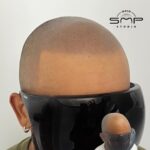
Dealing with body pains? Have yourself checked at the best physiotherapy clinic in Singapore
If you have been dealing with body pains for quite some time and have been relying on over-the-counter pain relief oral and topical medications, but have not gotten better at all, it may be time for you to see a specialist to help you with your problem. Leaving your aching body parts unchecked can affect your ability to fully function and quality of life. Before things get worse, head on to the best physiotherapy in Singapore to get your health checked.
Intro to Physiotherapy
Many may think that physiotherapy is solely for the body’s rehabilitation due to injuries. That is only one of the many areas of health benefits that physiotherapy can do.
Physiotherapy is a profession in the healthcare industry that focuses on dealing with managing and treating the body’s functionality, mobility, and overall health. It provides a wide variety of treatments, such as:
- Exercises
- Electrotherapy
- Heat therapy
- Massages
- Patient consultation and education
The goals of physiotherapy include:
- Chronic disease management
- Injury prevention
- Improved health, fitness, and lifestyle
- Physical rehabilitation
Only board certified physiotherapists are allowed to diagnose, practice, and manage the various conditions that affect the different parts and systems of the body, particularly the following:
- Bones
- Cardiovascular system
- Muscles
- Nerves
Types of Physiotherapy
Physiotherapy has sub-specialties that focus on specific conditions to ensure that these are managed and treated correctly and effectively. These are:
- Cardiopulmonary
- Geriatric
- Neurological
- Orthopedic / musculoskeletal
- Pediatric
Cardiopulmonary physiotherapy. This sub-specialty helps rehabilitate patients with cardiovascular and pulmonary conditions, improve their ability to function independently and have increased endurance through education, exercises, and resistance training.
Geriatric physiotherapy. This sub-specialty focuses on older adults and their ability to move and function well despite having certain conditions that occur as the body ages, such as:
- Alzheimer’s disease
- Arthritis
- Balance disorders
- Joint replacements
- Osteoporosis
Physiotherapists give guidance to the elderly on how to move appropriately with given limitations in order to prevent injuries and avoid aggravating pain.
Neurological physiotherapy. This sub-specialty deals with patients that suffer from neurological conditions and impairments. Some examples of these conditions are:
- Alzheimer’s disease
- Brain injury
- Cerebral palsy
- Multiple sclerosis
- Stroke
The methods used to rehabilitate patients with neurological conditions focus on enabling them to adapt and improve their mobility and functionality to be able to do daily activities despite having impairments.
Orthopedic / musculoskeletal physiotherapy. This sub-specialty focuses on improving the quality of life of a patient who has conditions and deformities affecting the musculoskeletal system. Physiotherapy is performed by applying exercises, muscle stimulation, stretching, and other treatments to bones, joints, ligaments, and tendons that have become impaired due to ailments, deformities, or injuries.
Pediatric physiotherapy. This sub-specialty covers minor defects and injuries in newborns and small children that may be present upon birth or development delays as they grow physically. A common disorder passed on genetically that affects the ability of children’s body to function properly is Cerebral Palsy. To improve the quality of life of the youngsters, therapeutic exercises that help improve and develop their ability to move and use the body parts that are affected with disability.
Types of Physiotherapy Treatments
There are several treatments used in physiotherapy that may or may not use equipment. Here are treatments available in one of the best physiotherapy clinics in Singapore:
- Cryotherapy – uses cold applications to treat injured tissues in order to lessen bleeding internally, pain, and swelling.
- Dry needling – uses sterile needles that are gently inserted beneath the skin where muscle tenderness or pain is located.
- Electrotherapy – uses electromagnetically charged equipment to treat swollen tissues by increasing the flow of blood in the area and trigger healing.
- Exercise therapy – uses various forms of exercises that promotes quick recovery by improving the coordination, movement, strength, and stability of the injured area.
- Manual therapy – uses hands-on methods to treat injuries to soft tissues and joints. These techniques promote healing, lessen soft tissue swelling, reduce pain, and provide relaxation.
- Shockwave therapy – uses Extracorporeal Radial Shock Wave Therapy (RSWT), an advanced technology that removes chronic pain usually felt in the shoulder, heel, or knee.
- Taping and strapping – uses Kinesio tape which is applied to areas of the body that need support during physical or sport activities to help boost joint stability, hinder any movement that may cause injury, and lessen pain felt in the target area.
- Thermotherapy – uses heat applications to treat spasm or tension in the muscles that cause pain that may be chronic.
- Ultrasound – uses equipment that emits high frequency sound waves which are applied to relax, treat, and alleviate pain from the damaged tissue by allowing blood to flow and eliminate scar tissues.
Physiotherapy Consultation Expectations
Your physiotherapy consultation experience may be similar to other patients, but the treatment plan that your physiotherapist will provide will be unique as it will be formed around your condition and needs. You can prepare for your initial physiotherapy consultation by:
- Having the accurate information about your personal and family medical history
- Having a list of your medications or treatments
- Having a list of your daily activities or any major life events that may have contributed to your health concerns
During your consultation, your health provider will:
- Conduct a physical assessment, which may include asking you to do simple tests to check your mobility and physical strength
- Diagnose and discuss your condition
- Plan for the best management and treatment plan for your condition
Do not hesitate to ask questions about your condition and let your healthcare provider also know about what you expect or hope to achieve from physiotherapy.
When to see a physiotherapist
A lot of times, patients are referred by doctors to see a physiotherapist following a medical incident like accidents, heart attack, or stroke. You should also consider consulting with a physiotherapist if you are suffering from conditions brought about by an ailment, chronic pain, injury, or disorder that are already affecting your quality of life negatively.
Physiotherapy costs
The cost of physiotherapy treatments vary depending on the needs of a patient. In Singapore, a single 3-minute physiotherapy session starts at SGD 115.
To know more about the benefits of physiotherapy, visit Physioactive.
—
Physioactive
Camden Medical Centre
#06-01 Singapore 248649
Phone: 6235 2647

















